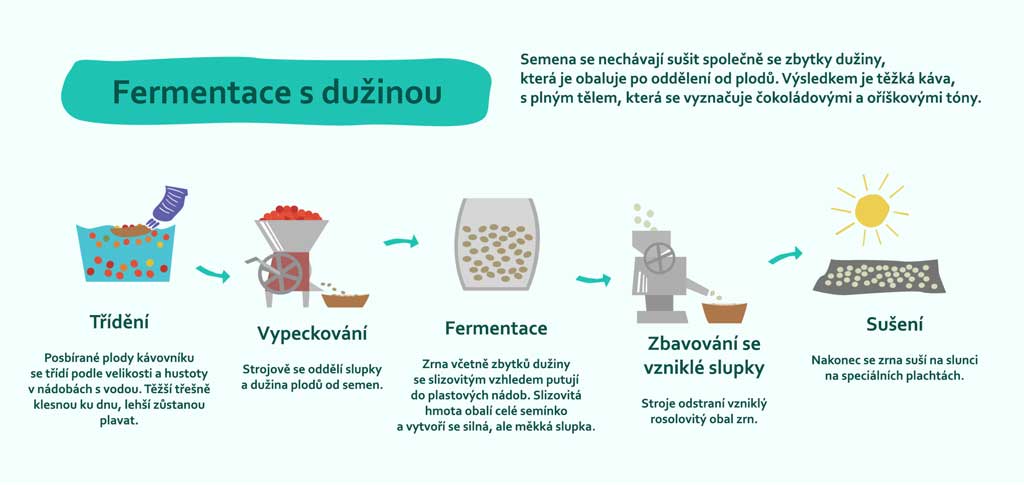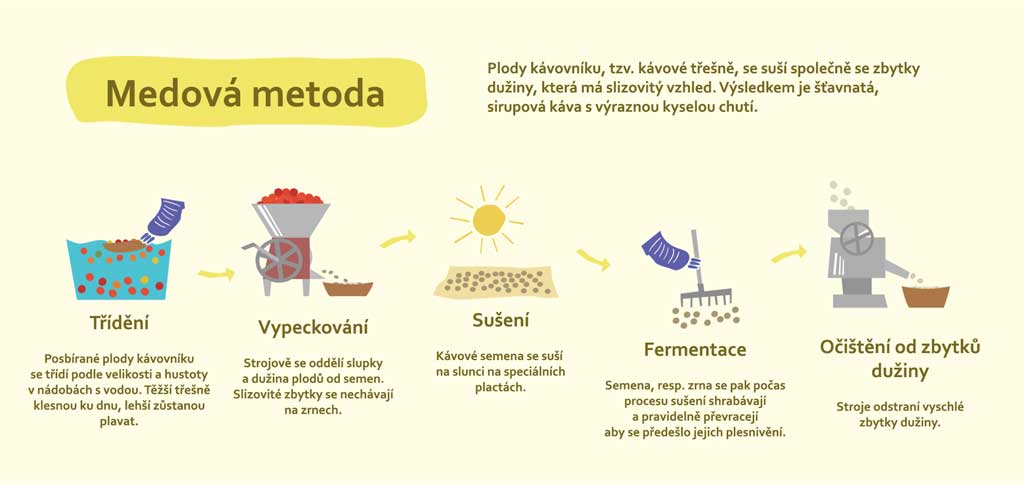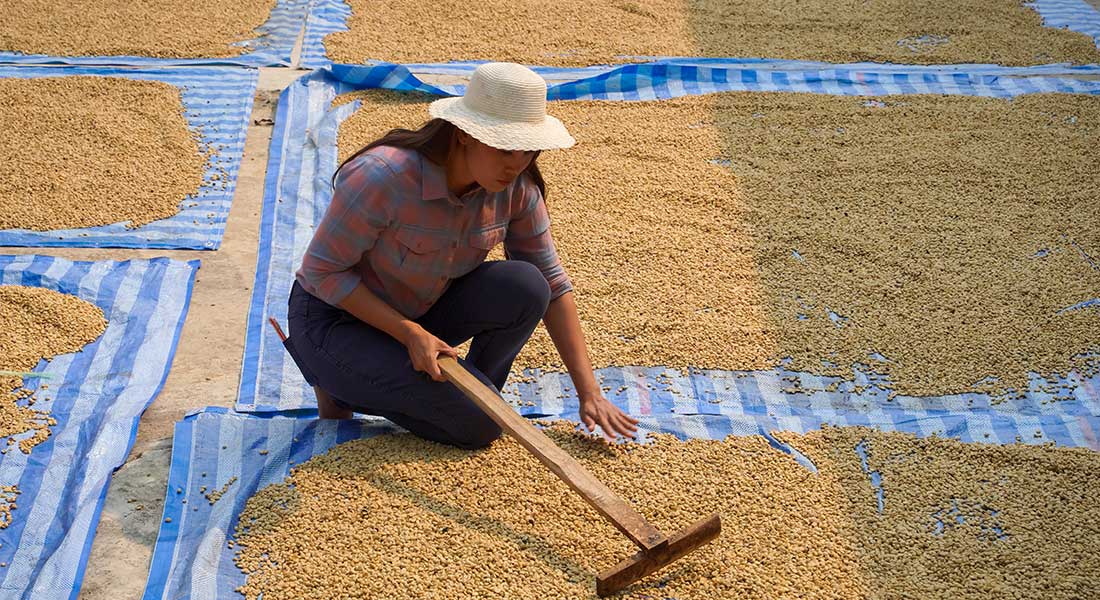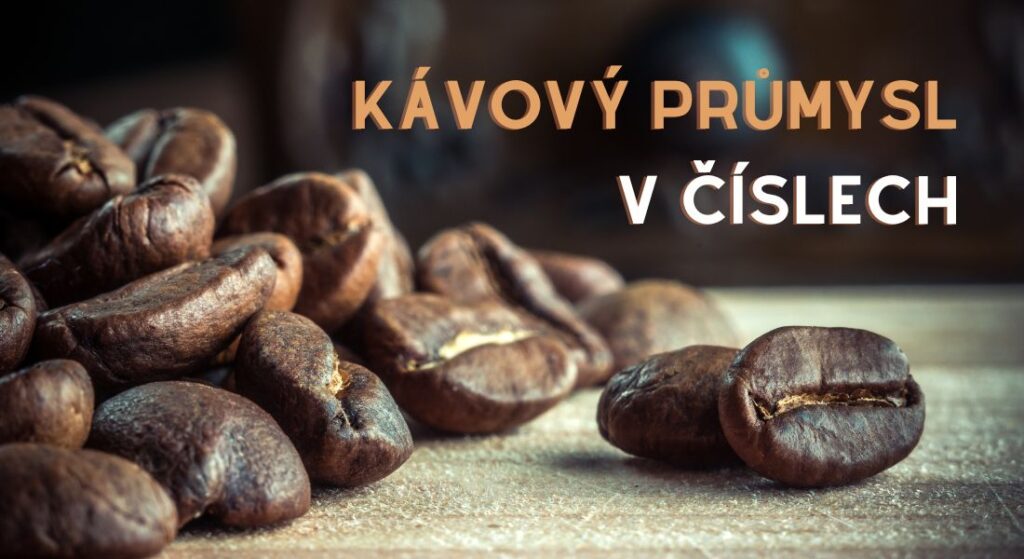Coffee. A drink that many of us can't even get out of bed without. But do you know the process by which it is created? Processing coffee is not at all as simple as you might think. Read on to learn more!
Dry, or natural method
The Natural way of coffee processing, also known as the dry way, is today considered a traditional, but still very common way of coffee processing. This method spread from Ethiopia and involves drying whole freshly picked coffee "cherries" with the beans still inside. They are dried in the sun, either on special terraces or on tables.
Subsequently, in the course of 3-6 weeks, a fermentation process will take place. During this time, the "cherries" must be regularly raked and turned over so that they do not spoil. Sugars and other substances attach to the grains, creating a characteristic taste, especially sweetness. Once the coffee is dry, the machine separates the pulp and skin from the beans.
Thanks to sufficient time for the absorption of flavors from the pulp of the fruit, this method gives rise to full-bodied coffees with a more intense and complex taste. Hand raking and the frequency of rotation of the fruit in particular have a great influence on the taste. If the timing or handling is incorrect, the fruits can become moldy, which will also introduce unpleasant taste additives into the grains. But if everything is done correctly and honestly, you will get a delicious coffee with sweet and fruity notes.

Wet method (grain washing method)
The second method of coffee processing is the so-called wet method. In this case, larger fruits with higher density are separated first. Using a machine (depulper), the grains are then separated from the pulp of the fruit. It is very important that these fruits are already ripe, ideally even overripe, so that, as with the previous method, their flavor is also absorbed into the grains. (However, since the pulp is separated before drying, the sugars and other substances have to be absorbed into the grains while they are still on the bush.) The grains then go straight from the stand into tanks full of water , where the rest of the viscous substances from the pulp of the fruit are washed from them. Finally, it is dried again on special sheets in the sun.
Coffee beans processed in this way have more pronounced and sharper taste features, consisting mainly of higher acidity. However, the body of the brewed coffee itself is lighter.

Wet method with fermentation with pulp residues
The third popular way of processing coffee is the hybrid, "semi-wet" method. Like the wet method, the hybrid method also starts with sorting the fruits according to size and density and then separating the grains from the pulp of the fruits. However, instead of going into the water tank, the grains, including the remains of the pulp with a slimy appearance, go into plastic containers. In these containers, practically the same thing happens to the coffee beans as it does to the chia seeds in the water – a slimy substance envelops the entire seed and a strong but soft skin is formed. After fermentation is completed, this layer is removed by machine and the grains are dried in the sun, as in the previous methods.
This method produces coffees with a heavy, distinct and intense taste, usually after chocolate and/or nuts, sometimes even with slightly spicy notes. It is therefore ideal especially for coffee blends that balance these properties.

"Honey" method (drying coffee beans together with pulp remains)
The last, lesser-known and very demanding method of coffee processing is the so-called "honey" method, which includes a combination of dry and wet methods. But the result is a unique coffee with a flavor similar to all previously described processing methods.
The first two steps, sorting and "pitting" are the same as for the wet and hybrid methods. The rest of the pulp is left on the grains, which are then dried in the sun. The amount of mucilage from the pulp left on the seeds determines the sweetness of the resulting coffee. Nowadays, there are even machines that control this amount.
Similar to the dry method, the seeds are then raked and turned to prevent mould. Finally, they get rid of the dried pulp.
The taste components of "honey" coffees are diverse and complex. Like coffees produced by the wet method, they have a cleaner and lighter body. Thanks to drying together with the remains of the pulp, they are usually also characterized by sweet tones reminiscent of syrup. This, on the other hand, is balanced by a more pronounced acidity, which is, however, gentler than in coffees processed using the wet method. Coffees produced using this method will be especially appreciated by connoisseurs with very refined taste buds.

Everyone likes something different, and therefore not every method, or its result suits everyone. Some people prefer coffee with higher acidity, while others dislike it and prefer heavy, bitter coffee. And what about you? Do you already know your favorite?
You might be thinking, “Well, that's all very well, but I drink instant coffee. And it's probably not made that way." Yes you are right! Instant coffee is a completely different story. We have clearly written everything you should know about instant coffee here.













